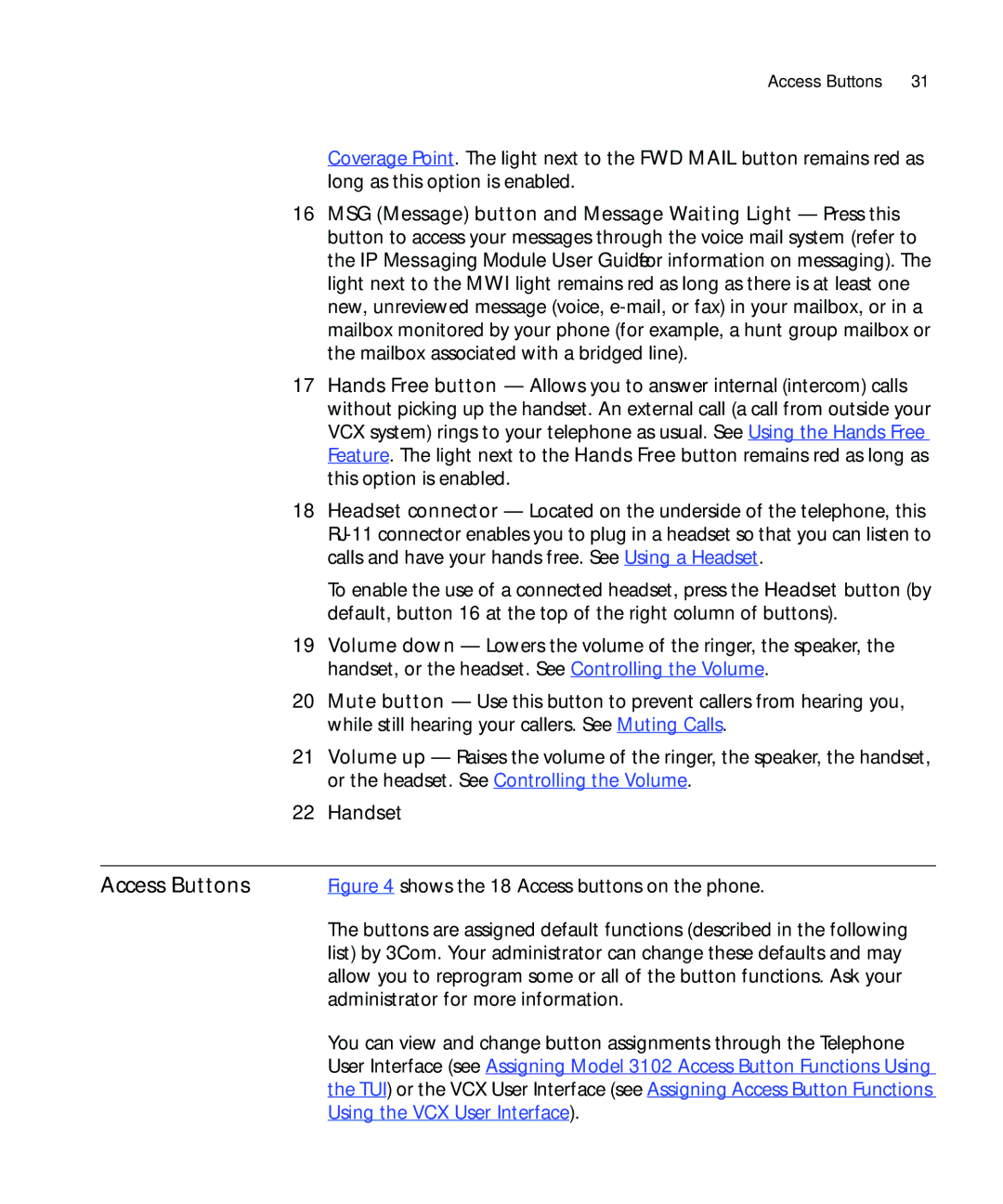Access Buttons | 31 |
Coverage Point. The light next to the FWD MAIL button remains red as long as this option is enabled.
16MSG (Message) button and Message Waiting Light — Press this button to access your messages through the voice mail system (refer to the IP Messaging Module User Guide for information on messaging). The light next to the MWI light remains red as long as there is at least one new, unreviewed message (voice,
17Hands Free button — Allows you to answer internal (intercom) calls without picking up the handset. An external call (a call from outside your VCX system) rings to your telephone as usual. See Using the Hands Free Feature. The light next to the Hands Free button remains red as long as this option is enabled.
18Headset connector — Located on the underside of the telephone, this
To enable the use of a connected headset, press the Headset button (by default, button 16 at the top of the right column of buttons).
19Volume down — Lowers the volume of the ringer, the speaker, the handset, or the headset. See Controlling the Volume.
20Mute button — Use this button to prevent callers from hearing you, while still hearing your callers. See Muting Calls.
21Volume up — Raises the volume of the ringer, the speaker, the handset, or the headset. See Controlling the Volume.
22Handset
Access Buttons | Figure 4 shows the 18 Access buttons on the phone. |
| The buttons are assigned default functions (described in the following |
| list) by 3Com. Your administrator can change these defaults and may |
| allow you to reprogram some or all of the button functions. Ask your |
| administrator for more information. |
| You can view and change button assignments through the Telephone |
| User Interface (see Assigning Model 3102 Access Button Functions Using |
| the TUI) or the VCX User Interface (see Assigning Access Button Functions |
| Using the VCX User Interface). |
